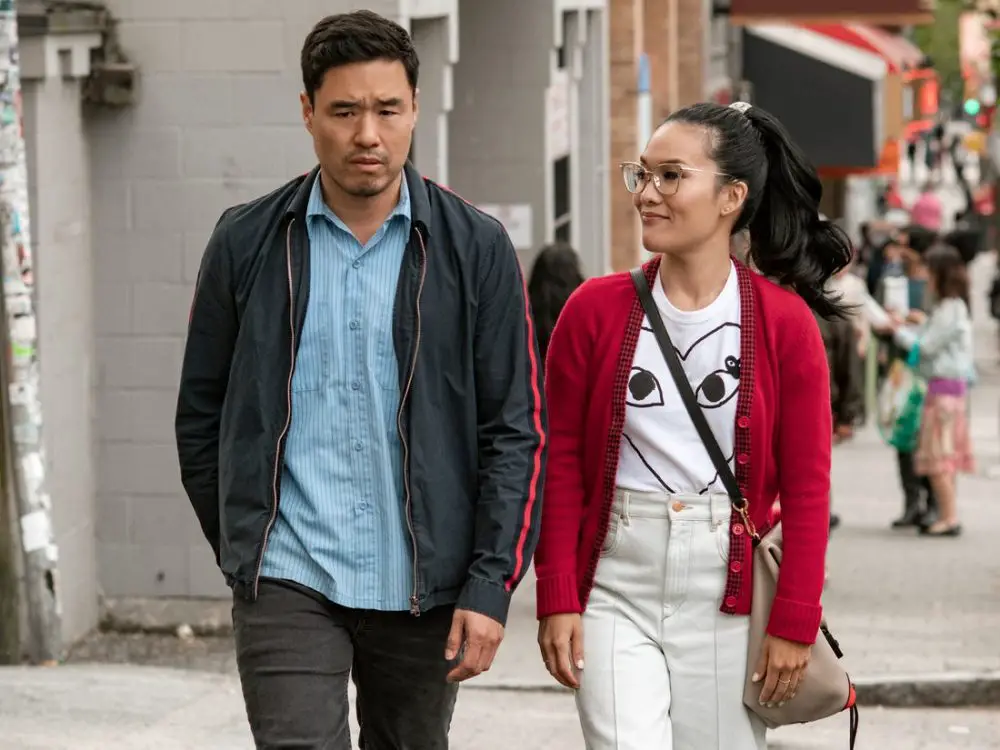Romantic comedies, or rom-coms, have been a staple of cinema in the United States for decades, all the way back to the era of silent films. They helped build the careers of actors ranging from Marilyn Monroe to Noah Centineo, directors like Judd Apatow and Nancy Meyers and writers like Richard Curtis and Nora Ephron. After all, love and its comedic effects are an easy subject for an appealing film. While pining and star-crossed lovers and the anguish of losing loved ones can be entertaining, sometimes you just want a happy ending.
In recent years, rom-coms have climbed back up the list of U.S. and English-language cinematic output, with this past year including “The Kissing Booth 2” and “Palm Springs” among its most major releases, and no one has had a bigger role in it than Netflix.
According to Wikipedia’s incomplete list of romantic comedies, the United States started the 2010s with a bunch of major releases, ranging from 2010’s “Easy A,” a teen adaptation of “The Scarlet Letter,” to 2012’s “Silver Linings Playbook,” based on the 2008 novel. But from 2013-2017, Asian countries like China, South Korea, Japan and Hong Kong made up the majority of rom-com releases. (Major English-language rom-coms from the era include 2014’s “The Fault in Our Stars” and 2017’s Academy Award-nominated “The Big Sick.”)
Come 2018, though, the United States suddenly appeared back on the list, with “Crazy Rich Asians,” “The Kissing Booth,” “Love, Simon,” “Set It Up” and “To All The Boys I’ve Loved Before” being the most notable releases. The United States remained a top dog in 2019 and 2020 with 15 films on the list, only four less than the entire 2013-2017 period.
The most fascinating thing? Out of the 26 included U.S.-produced films since 2018, 14 of them (54%) have been Netflix releases. Films like “Love Wedding Repeat,” an English-language co-production between Italy and the United Kingdom that premiered on U.S. Netflix in April, aren’t included in the tally, either. These 14 films also remain the ones I’ve heard the most about from other people and seen talked about on social media. It makes me wonder: Did Netflix revive the rom-com? And why did it go dormant, if not dead, in the first place?
In the 1930s and ’40s, screwball comedies were the main rom-coms out there. During the ’50s and ’60s, it became the movie musical, sometimes created for film, other times adapted from the stage. In the ’70s, Woody Allen got his hands on it, moving the genre’s default city to New York and adding psychological depth to its characters, in particular the male ones.
For many, Rob Reiner’s 1989 film “When Harry Met Sally…” defines the rom-com, particularly those of the 1990s. The film took Allen’s ideas of New York and psychological nuance and combined it with Ephron’s journalistic probing of relationships. The movie showcased the opposites-attract dynamic between leads Meg Ryan and Billy Crystal, and a happy ending inspired by Reiner’s real-life second-chance-at-love.
By the 2000s and early 2010s, rom-coms were down to a formula: unhappy people, single or committed; opposites attract; two-act build-up; third-act misunderstanding; ending with a race against the clock to make-up and confess their feelings. Quirky side characters sometimes got a love life of their own, and the cast was predominantly white, usually featuring a Black and/or an implied-to-be-gay best friend. Some films, like “(500) Days of Summer” (2009), deconstructed the genre, or balanced the tropes across an ensemble cast, like “Valentine’s Day” (2010).
The dormancy of 2013-2017 might just be because people got bored of the genre. The major box-office hits were the Marvel Cinematic Universe films, dystopian films like “The Hunger Games” and “Divergent,” and various sequels or remakes. Rom-coms stopped being a formula people were interested in, so characters already known and loved from comics, novels and older films took to the screen. It’s fun to follow what happens to a character over a series of films, but a rom-com sequel is hard to do right.
So why did the rom-com come back? The top-grossing box-office films of 2018 and 2019 are not too different from 2013-2017, but Netflix does not reflect the box office. Netflix original content runs the gamut of what is out there. If anything, I think the late 2010s rom-com renaissance happened somewhat by accident and somewhat by orchestration.
From original announcement to release, the average movie takes roughly two years to produce, meaning the 2018 rom-coms were likely purchased as early as 2015 and as late as 2017. This period proved to be a pivotal time in the United States, covering the 2016 election. Trump’s presidency has defined a new era of art-making, and if all art is inherently political, then rom-coms are equally affected. In a world with a lot of hate being spewed all the time, sometimes you just want to fall in love.
The airport chases are officially defunct in a post-9/11 world, but a lot of other tropes have been rejected too — the happy ending, for one. Look at films like 2016’s “La La Land,” an homage to the musical romantic comedies of the ’50s and ’60s, but it ends with the characters not getting back together. While some of the formula remains intact, writers are getting creative with circumnavigating the expectations while incorporating new facets of life, such as social media and online dating.
Diversity has also played a huge role in the new wave of rom-coms. “Crazy Rich Asians” and “Always Be My Maybe” follow Asian characters, “Love, Simon” and “The Thing About Harry” center on LGBT+ stories and “The Lovebirds” revolves around an interracial couple made up of one Black woman and one Pakistani man. There has also been a trend to focus on younger characters instead of mostly singles approaching 30.
If this is all the “accident” side, then the orchestration side comes from how when movies or shows perform well on Netflix, more similar content will be ordered, just like at the box office. Action films dominated much of the 2010s because they made big money, though action films are no less formulaic than rom-coms.
From my experience, the new Netflix films, while maybe not always getting awards or even positive reviews, get talked about on social media, or at least get hate-watchers. One of my favorite things to do with my friends is watching and ridiculing bad rom-coms, and Netflix has several to offer. All press is good press and all watches push content. (That’s why there are three separate “A Christmas Prince” movies.)
While I think Netflix helped to revive the rom-com, the most important players are the writers and directors who want to take rom-com tropes, twist them well and give them to actors and characters not usually represented in the genre, as well as the spectators who support and applaud the decisions. I am all for it.

















